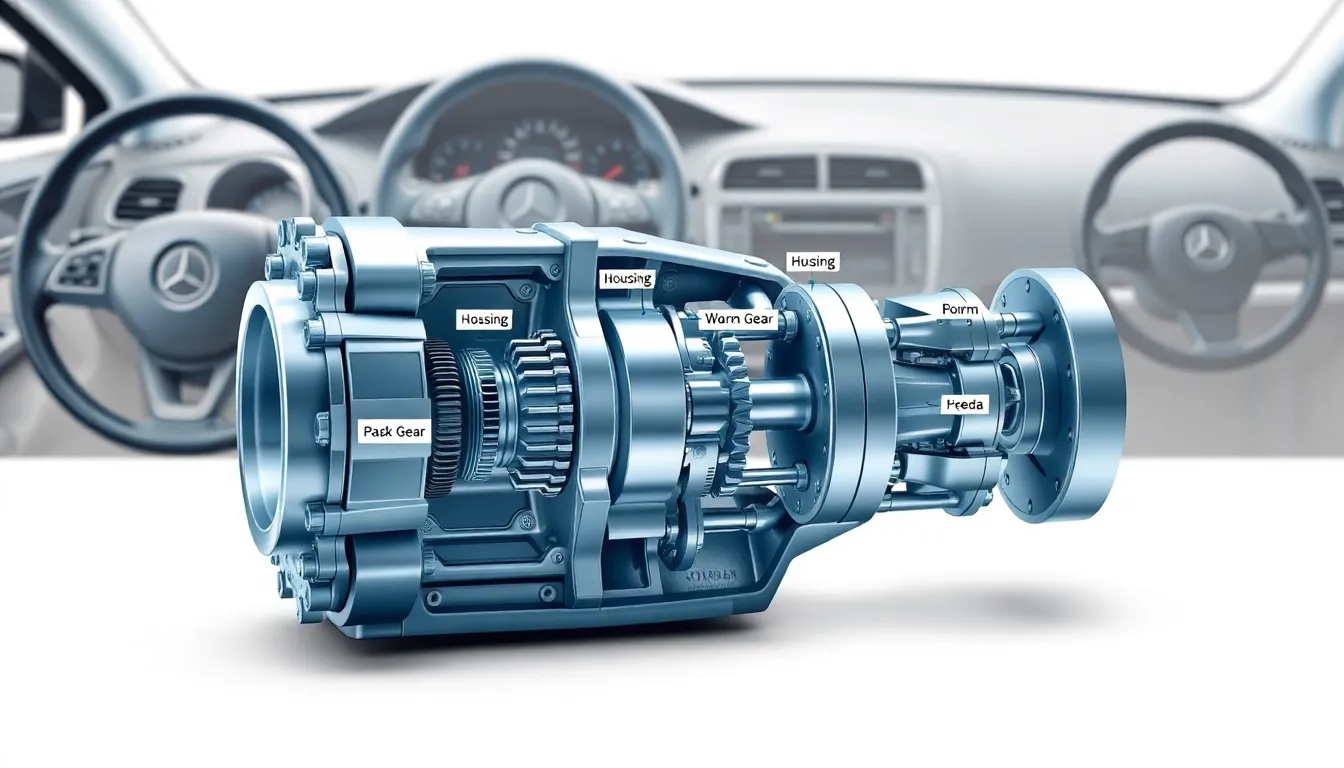Ever tried steering a car with a broken steering gear box? It’s about as easy as herding cats during a thunderstorm. But worry not. In this text, we’ll break down the steering gear box, a crucial component of your vehicle that’s more fascinating than you might think, once you get past the technical jargon. Whether you’re a car enthusiast or just someone who wants to understand how their vehicle works, this guide will provide a clear and professional overview without putting you to sleep.
Table of Contents
ToggleUnderstanding The Steering Gear Box

The steering gear box is the unsung hero of vehicle control, transforming the rotational motion of the steering wheel into the lateral motion needed to turn the wheels. This device is critical for safe and responsive steering, directly affecting a driver’s experience behind the wheel. It ensures that every minor twitch of the steering wheel results in a corresponding movement of the vehicle’s wheels, providing precision, stability, and responsiveness. Without a well-functioning steering gear box, maneuvering your vehicle would be like trying to bake a cake without any eggs, a recipe for disaster.
Components of The Steering Gear Box
A steering gear box typically consists of several key components:
- Input Shaft: This is connected to the steering wheel. When you turn the wheel, it rotates the input shaft.
- Gear Mechanism: Depending on the type of steering gear, the mechanism may vary. Some commonly used gear mechanisms include worm gears and rack-and-pinion gears.
- Output Shaft: After the gear mechanism translates the motion, the output shaft sends the signal to the wheels.
- Housing: This encloses the critical components, protecting them from dirt and damage.
- Bearings: These allow the shafts and gears to rotate smoothly, reducing friction.
Understanding these components is essential. Without them, your steering system might end up doing the cha-cha instead of guiding your car smoothly.
Types of Steering Gear Boxes
There are several types of steering gear boxes in use today, each with unique characteristics:
- Recirculating Ball Gear Box: Often found in older vehicles, this type uses balls that circulate to reduce friction.
- Rack-and-Pinion Gear Box: Most modern cars use this design, providing a direct connection between the steering wheel and the wheels for superior precision.
- Power Steering Gear Box: Enhances steering ease through hydraulic or electric assistance, making it less strenuous to turn the wheel.
- Electronic Power Steering Gear Box: This type uses an electric motor to provide assistance, improving fuel efficiency and offering advanced features like variable steering ratios.
Each type offers different advantages and disadvantages: your choice will depend on the kind of driving experience desired.
How to Read a Steering Gear Box Diagram
Reading a steering gear box diagram may seem daunting, but once you learn the basics, it can be quite simple:
- Familiarize Yourself with Symbols: Diagrams use specific symbols to represent parts like shafts, gears, and fluid paths. Understanding these symbols is the first step.
- Follow the Flow: Arrows often indicate the direction of motion. Take note of how they connect different components.
- Identify Key Measurements: Diagrams may include measurements for spacing, height, and width. These can be crucial if you’re considering a DIY project.
- Refer to the Legend: Most diagrams will include a legend explaining what each symbol and line represents. Keep this handy for quick reference.
With practice, reading these diagrams will become second nature, making you feel like a steering gear box guru.
Common Issues Related to Steering Gear Box
The steering gear box can experience several issues that may compromise vehicle safety and handling:
- Leaking Fluid: A common sign of wear, fluid leaks can lead to reduced power steering capacity.
- Worn Bearings: These may cause steering to feel rough or sticky, significantly impacting performance.
- Misalignment: If the steering gear box is not properly aligned, it can lead to uneven tire wear and poor steering response.
- Noise During Operation: Unusual sounds can be a signal that the gears are damaged or having issues, indicating that it’s time for a closer look.
Regular checks and maintenance can help catch these issues early, keeping your ride smooth and safe.





